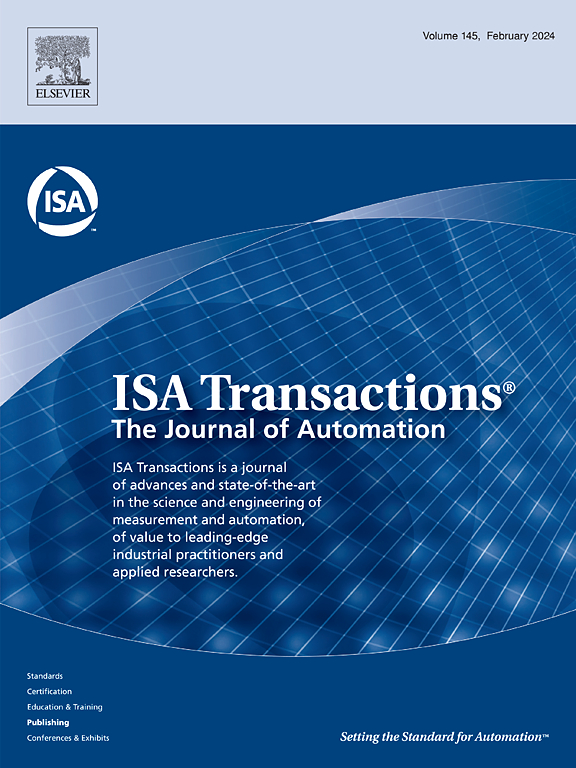Equivalent-input-disturbance based rotating control of drill-string in compound directional drilling process subject to coal seam variation
IF 6.3
2区 计算机科学
Q1 AUTOMATION & CONTROL SYSTEMS
引用次数: 0
Abstract
Coal seam variations in coal mine drilling can cause fluctuations in feed speed and rotational speed of the rotary head (ROR), reducing the performance of compound directional drilling control systems. This paper addresses these issues by considering the change in intrinsic specific energy caused by coal seam variations as a disturbance. An equivalent-input-disturbance (EID) based control system is designed to mitigate these effects. An axial-torsional coupled dynamic model of the drill-string system is developed, and EID and improved EID estimators are used to suppress the impact of bit–rock interaction. Field data from a gas extraction borehole is used to validate the effectiveness of the drill-string dynamics model. Simulation results demonstrate that the proposed control system surpasses the PI control system, the disturbance observer-based control system, and the active disturbance rejection control system. Specifically, the feed speed overshoot is reduced from 73%, 47%, and 46% to 33%, with settling time reduced from 3 s, 1.7 s, and 1.8 s to 1.5 s. The ROR overshoot decreases from 54%, 49%, and 43% to 11%, and settling time from 4.7 s, 3.1 s, and 2.8 s to 2.3 s. Additionally, feed speed and ROR fluctuations are minimized to 0.2% and 0.1%, respectively, demonstrating superior performance.

煤层变化复合定向钻井过程中基于等效输入扰动的钻柱旋转控制
煤矿钻井中煤层的变化会引起进给速度和旋转头转速的波动,降低复合定向钻井控制系统的性能。本文将煤层变化引起的固有比能变化视为扰动来解决这些问题。设计了一种基于等效输入干扰(EID)的控制系统来减轻这些影响。建立了钻柱系统的轴扭耦合动力学模型,利用EID和改进的EID估计器来抑制钻头-岩石相互作用的影响。利用抽气井的现场数据验证了钻柱动力学模型的有效性。仿真结果表明,该控制系统优于PI控制系统、基于扰动观测器的控制系统和自抗扰控制系统。具体来说,进给速度超调从73%、47%和46%降低到33%,沉降时间从3秒、1.7秒和1.8秒降低到1.5秒。ROR超调从54%、49%和43%降低到11%,稳定时间从4.7 s、3.1 s和2.8 s降低到2.3 s。此外,进料速度和ROR波动分别降至0.2%和0.1%,表现出优异的性能。
本文章由计算机程序翻译,如有差异,请以英文原文为准。
求助全文
约1分钟内获得全文
求助全文
来源期刊

ISA transactions
工程技术-工程:综合
CiteScore
11.70
自引率
12.30%
发文量
824
审稿时长
4.4 months
期刊介绍:
ISA Transactions serves as a platform for showcasing advancements in measurement and automation, catering to both industrial practitioners and applied researchers. It covers a wide array of topics within measurement, including sensors, signal processing, data analysis, and fault detection, supported by techniques such as artificial intelligence and communication systems. Automation topics encompass control strategies, modelling, system reliability, and maintenance, alongside optimization and human-machine interaction. The journal targets research and development professionals in control systems, process instrumentation, and automation from academia and industry.
 求助内容:
求助内容: 应助结果提醒方式:
应助结果提醒方式:


